1. The easier it is to review your notes, the more likely you'll do it.
2. Progressive Summarization is a technique to make it easy to see at a glance what a note is about, even if it's long. You do so by strategically bolding and highlighting your notes and writing short summaries.
3. Only refine and distill your notes when using them for projects. Don't distill for the sake of distilling; you'll never keep up and likely burn out.
Hey friend,
Note-taking is like time travel. By packaging information or insights, we can help our future selves solve problems we cannot even imagine right now.
But for notes to be useful, we need to be able to find and understand them.
The Distill stage of the CODE framework aims to do just that: make our notes so easy to reread that we use them in our creative work (during the Express stage).
Here’s one easy way to distill your notes:
Distill with Progressive Summarization
Yesterday, we learned about the PARA method to organize notes for actionability. But for notes to be useful, they must also be easy to reuse.
Sounds simple enough. But how do we do that?
Using a technique that Tiago Forte calls Progressive Summarization. This is the core idea: whenever you touch a note, you make it easier to consume for your future self by bolding and highlighting the most important parts.
Here’s a diagram explaining the concept abstractly:
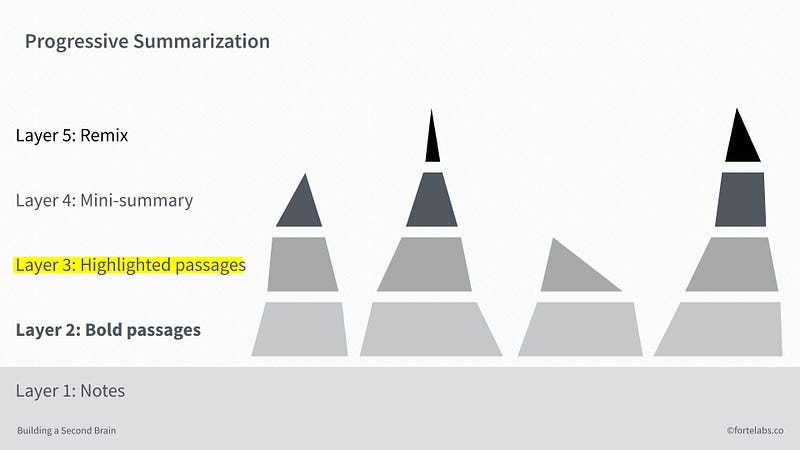
And here’s how Tiago does it:
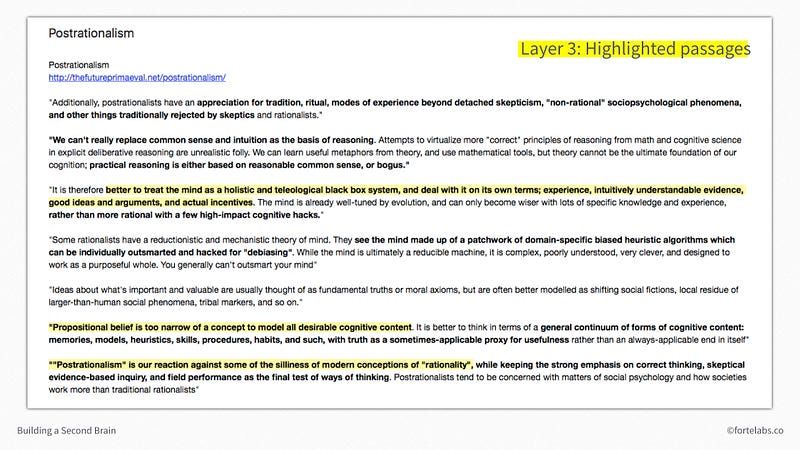
He recommends highlighting no more than 10% of a source, then bolding 10% of each highlight at a maximum, and at most highlighting 10% of those bolded parts.
But to make notes truly atomic and easy to remix, it’s necessary to write summaries and takeaways.
Here’s how I do that:
How I distill my notes in Logseq
I do every step of CODE at different moments in time.
I aim to have multiple passes of the same material to digest it more fully and distill its essence as my understanding grows over time.
That means that when I capture ideas, I only capture. When I organize, I only organize. And when I distill, I only distill my notes to their essence.
I do this distillation by writing short summaries. Because I work in outlines that are easy to collapse, these summaries act like “thumbnails” for my notes. At a glance, I can see what a note or highlight is about and either ignore it or dig deeper.
But that’s the result. First, I start by bolding interesting parts of the highlights I saved:
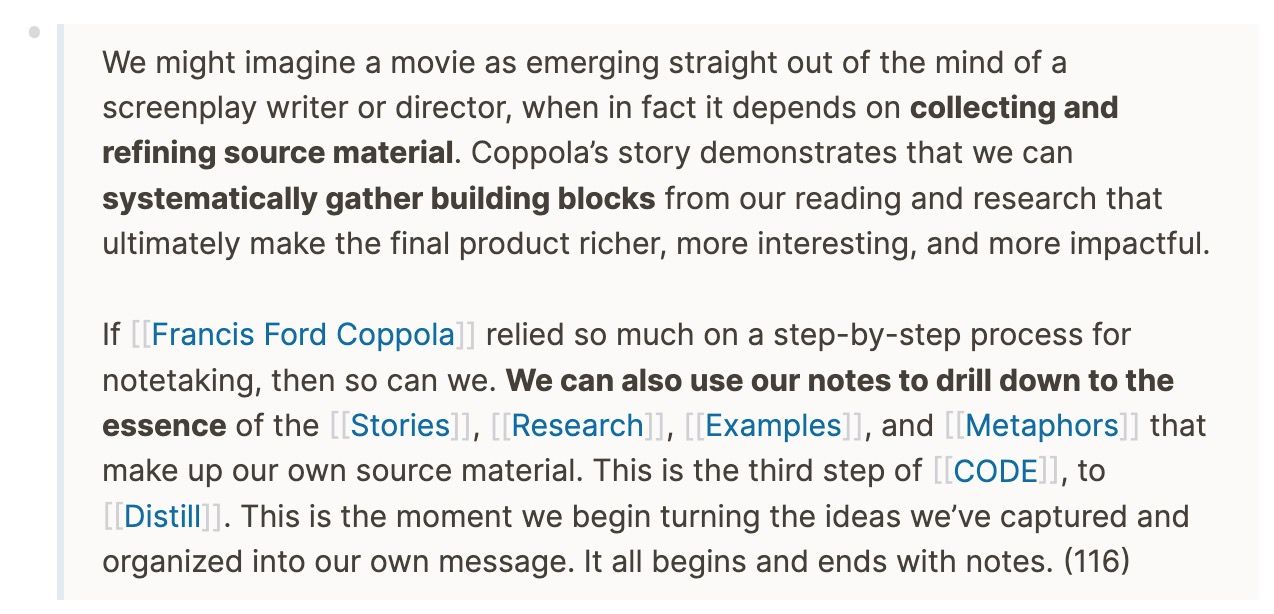
If I read the paper version of a book, I tend to bold in the digital highlight what I underlined in the book:
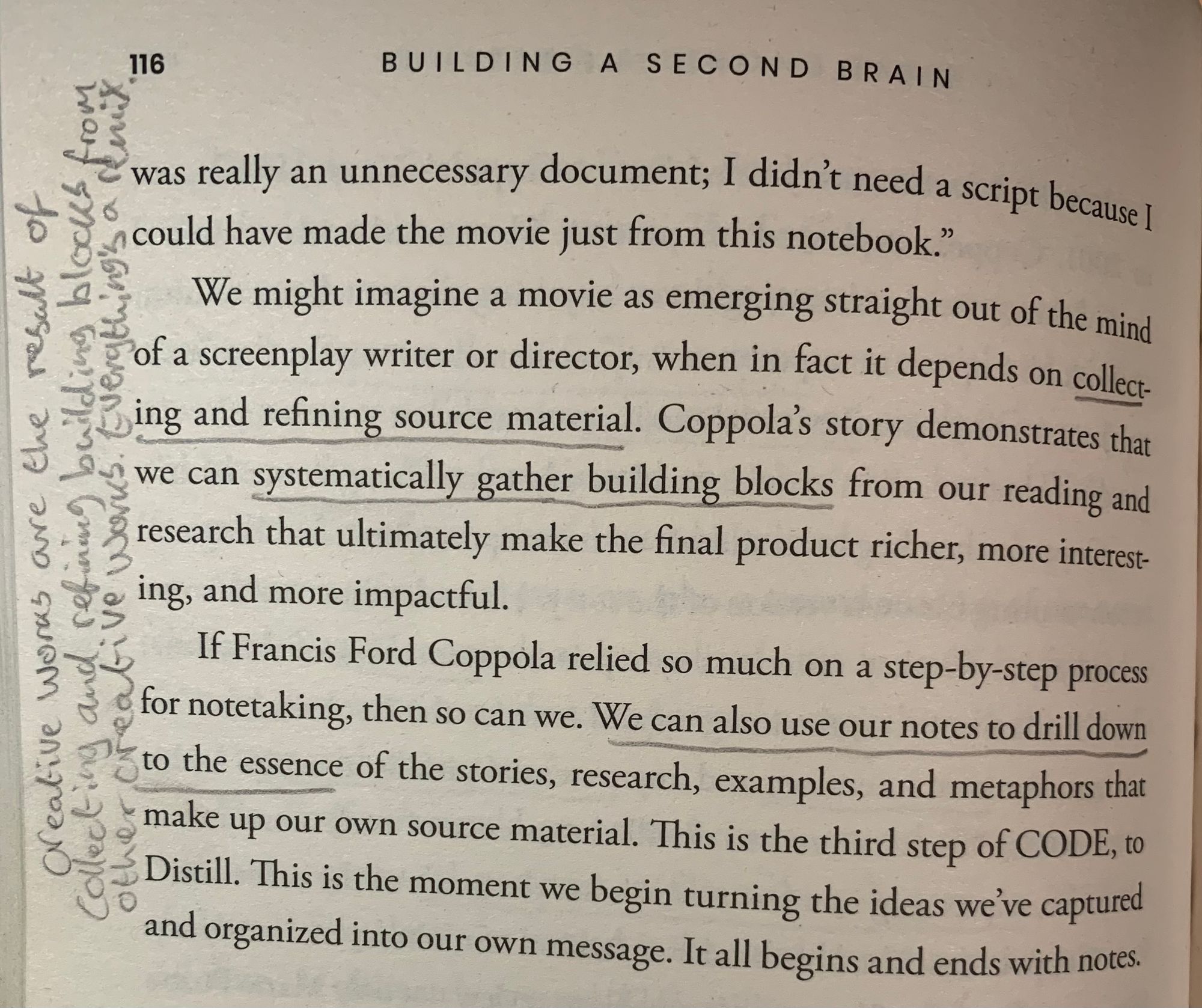
As I often scribble in the margins, I use these as the starting point for my summaries (which act like thumbnails):
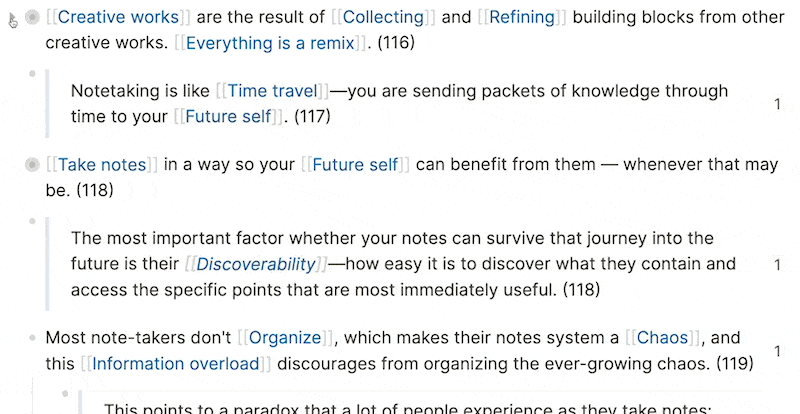
So when do I do this?
Whenever I touch the note.
I often start my research by flipping through books I read (and annotated). I then transfer over notes or refine them “just in time.”
Many of my highlights never get a summary. Adding a few links and bolding the essential parts is enough. That way, I can already find and remix them into other works.
How to remix our notes and use them in projects is tomorrow's topic.
Your turn: How do you distill?
Looking at examples from other creatives (see the “Further learning” section), distillation can take many forms. From an index card to an intricate sketchnote, anything goes.
So here’s my question for you:
How do you prefer to distill your notes?
What specific tools or techniques make it easier for your future self to reuse the information you’ve consumed in the past?
Please share your experiences as a comment or directly via email.
I hope to read from you!
—Ramses
Further learning
Progressive Summarization: A Practical Technique for Designing Discoverable Notes
(12 minutes reading time)
This is a complete introduction to Progressive Summarization. The whole series spans six articles, but I think you can get a good enough sense of what it is by reading this article and the one below.
Progressive Summarization II: Examples and Metaphors
(7 minutes reading time)
In this week’s lessons, I’m sharing how I organize my notes in outlines (using Logseq). Tiago’s examples of how he progressively summarizes his notes will be handy if you use a tool that works with linear documents (like Obsidian, Evernote, and the like).




